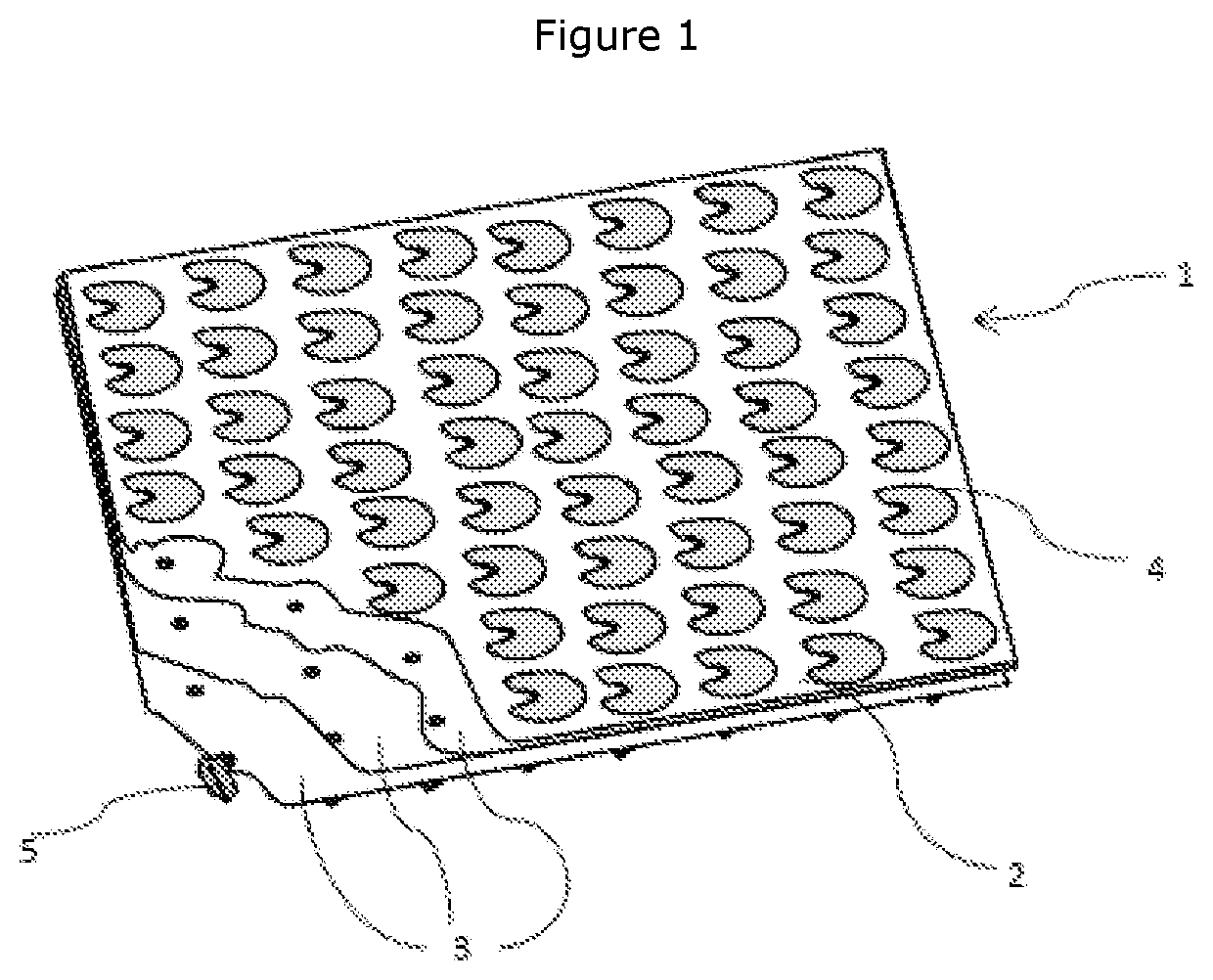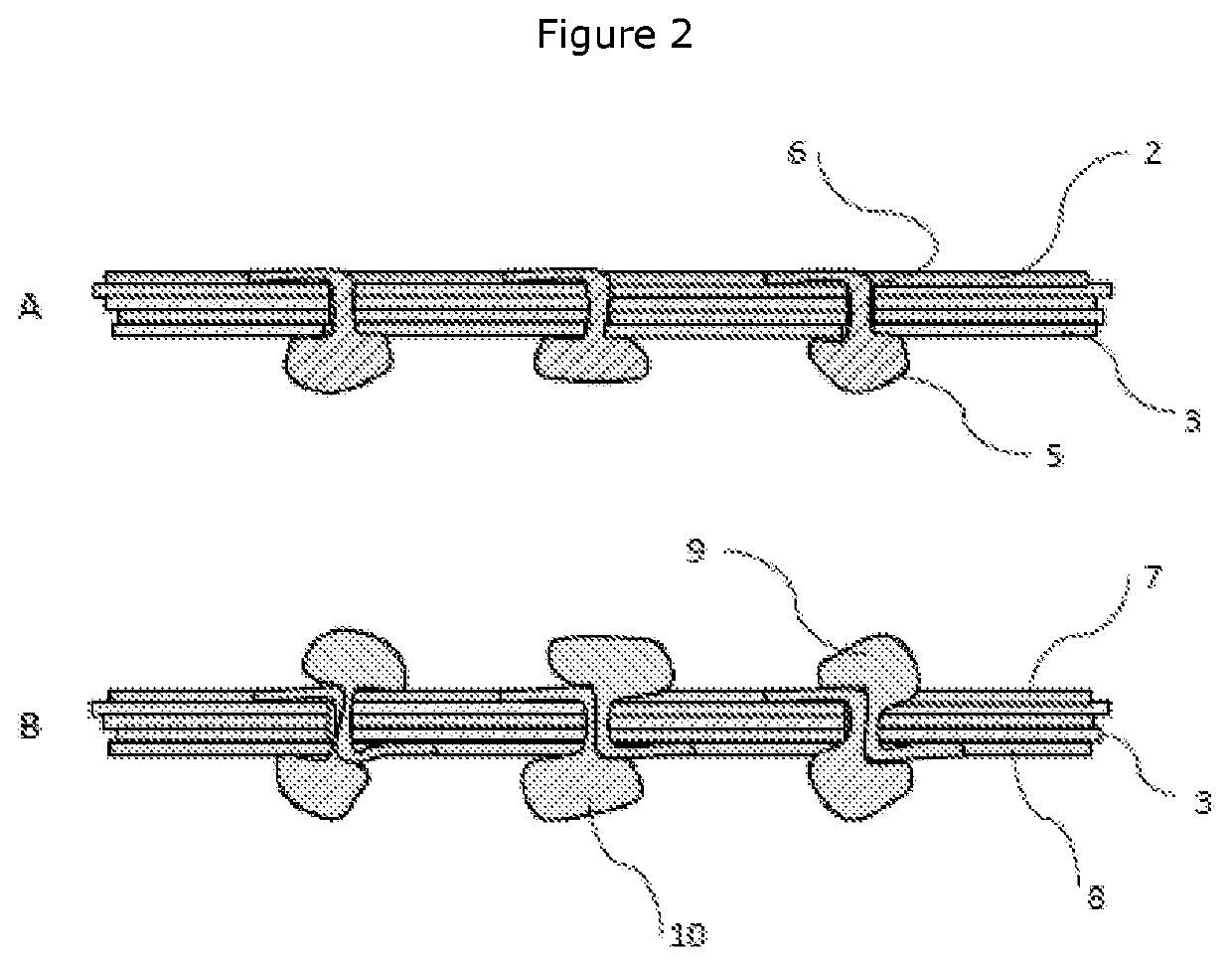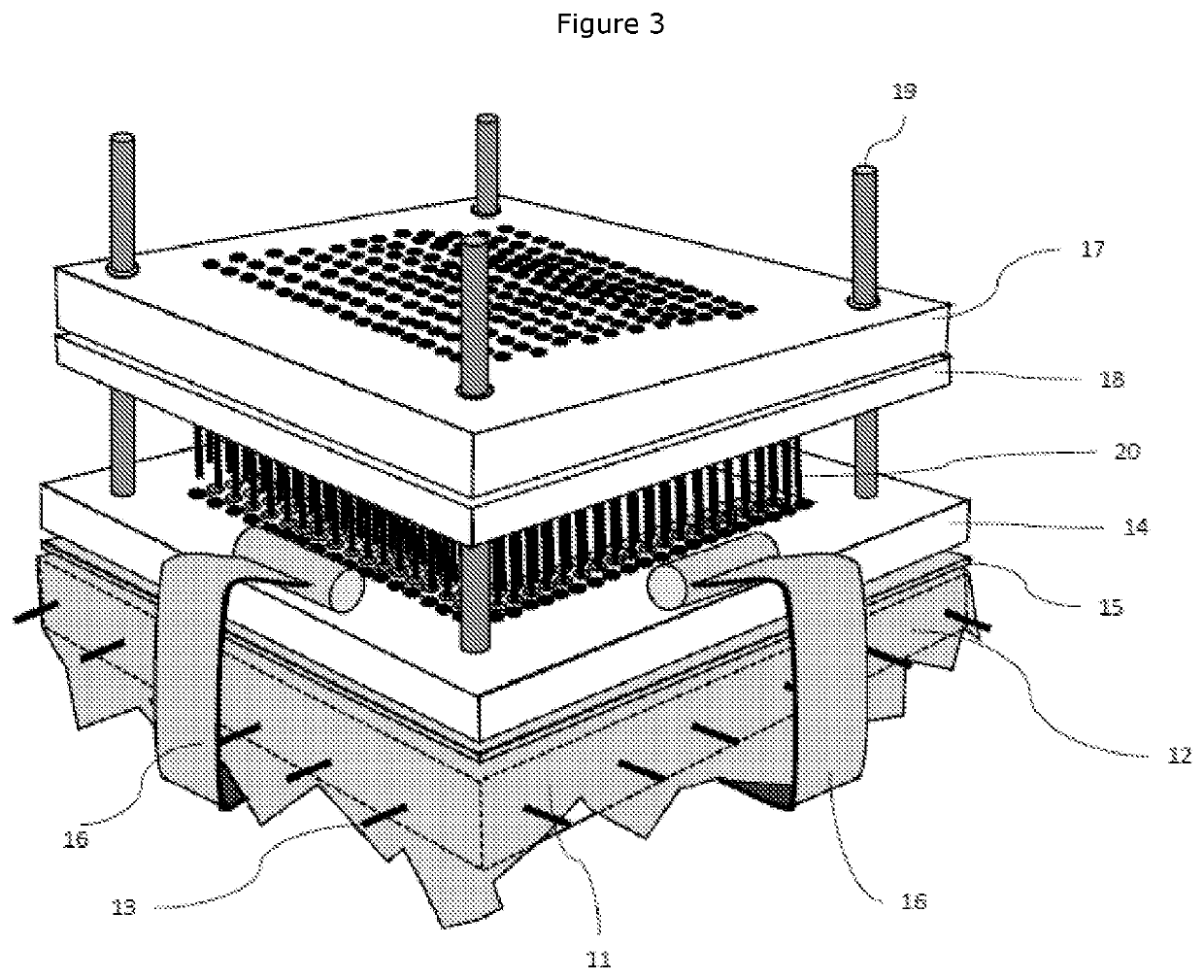Laminated tissue graft product
a technology of laminated tissue and graft, which is applied in the field of laminated tissue graft products, can solve the problems of affecting the thickness of the graft, the potential damage of the ecm, and the alteration of the immune response, so as to reduce the risk of rejection, inflammation or infection
- Summary
- Abstract
- Description
- Claims
- Application Information
AI Technical Summary
Benefits of technology
Problems solved by technology
Method used
Image
Examples
example 1
inated Product Having One Lug Sheet and Four Pierced Sheets
[0104]ECM was prepared from vertebrate forestomach tissue in accordance with the procedure described in U.S. Pat. No. 8,415,159. Sheets of forestomach ECM were formed from a segment of forestomach tissue of a warm-blooded vertebrate, said segment comprising the propria-submucosa.
[0105]A lug sheet was prepared according to the following method: four 5 mm diameter holes were punched into one sheet of lyophilised ECM, using cutting die and press, at each corner of 140 mm×140 mm square. This sheet was placed over a 140 mm×140 mm flat acetal plate with 5 mm diameter guide rods positioned equidistant from each corner to match the holes cut into the lyophilised ECM sheet, the guide rods fixing the sideways position of the ECM on the plate. The plate has a 29 row by 29 column grid of 3.1 mm diameter clearance holes positioned at 3.5 mm centres at its centre, resulting in a perimeter section without holes of around 20 mm wide. This p...
example 2
Product Having Two Lug Sheets and Three Pierced Sheets
[0108]Sheets of ECM were prepared as described in Example 1. Two lug sheets and three pierced sheet were also prepared as described in Example 1. The laminated product was assembled by the following method: Two lug sheets were placed on top of the pierced sheets, guiding the four guide holes down the guide rods to align. The lug sheet was rehydrated with an isotonic saline solution. The separation slip, hold down plate and clamps were replaced. A pin block comprising an acetal block with blunted pins, arranged in a grid matching that of the clearance holes was used. The pin block also had guide holes aligning with the guide rods and was lowered on top of the hold down plate, with the pins facing towards the ECM sheet, using the guide holes and guide rods to align. The assembly was placed in an arbour press and was compressed. The pin block was removed, replaced and compressed in an arbour press a further two times. The assembly w...
example 3
Product Having a Polypropylene Lug Sheet
[0109]Sheets of ECM were prepared as described in Example 1. A lug sheet was prepared as described in Example 1 except that the sheet used was polypropylene mesh. Pierced sheets were prepared as described in Example 1. The laminated product was prepared by the following method: The polypropylene lug sheet was placed on top of the pierced sheets, guiding the four guide holes down the guide rods to align. The lug sheet was rehydrated with an isotonic saline solution. The separation slip, hold down plate and clamps were replaced. A pin block comprising an acetal block with blunted pins, arranged in a grid matching that of the clearance holes was used. The pin block also had guide holes aligning with the guide rods and was lowered on top of the hold down plate, with the pins facing towards the ECM sheet, using the guide holes and guide rods to align. The assembly was placed in an arbour press and was compressed. The pin block was removed, replaced...
PUM
| Property | Measurement | Unit |
|---|---|---|
| diameter | aaaaa | aaaaa |
| thick | aaaaa | aaaaa |
| diameter | aaaaa | aaaaa |
Abstract
Description
Claims
Application Information
 Login to View More
Login to View More - R&D
- Intellectual Property
- Life Sciences
- Materials
- Tech Scout
- Unparalleled Data Quality
- Higher Quality Content
- 60% Fewer Hallucinations
Browse by: Latest US Patents, China's latest patents, Technical Efficacy Thesaurus, Application Domain, Technology Topic, Popular Technical Reports.
© 2025 PatSnap. All rights reserved.Legal|Privacy policy|Modern Slavery Act Transparency Statement|Sitemap|About US| Contact US: help@patsnap.com



